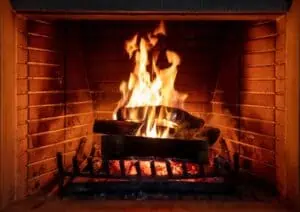How to Install a Gas Fireplace Insert?
A gas fireplace insert is a self-contained unit that can be installed inside an existing fireplace, in the wall, or even as a built-in unit that sits on its own. They come in a wide range of styles and are designed to be as sleek as possible or more traditional.
(Looking for “gas fireplace venting requirements”? Contact us Today!)

The cost of installing a gas fireplace insert is determined by the manufacturer, the type of gas used, and whether the insert requires venting or is unvented. Additionally, labor and installation fees can vary greatly, depending on the size of the fireplace and the local building codes.
Installing a gas fireplace is a DIY project that involves installing gas lines and electrical wiring. Professional installers have the skills and experience necessary to ensure your new fireplace is installed properly, safely, and efficiently.
Measure the fireplace opening to ensure that it will accommodate your insert and any additional components you want to include (faux logs, glass doors, etc). Afterward, hire a licensed fireplace pro to install the insert. They will haul away any existing fireplace pieces, run the electricity and gas lines, and install any other extras you have ordered.
Build a frame around the fireplace to hold the insert, following the framing instructions provided by your manufacturer. Common 2 x 4-dimensional lumber is typically used, and the framing should be made with a stucco coating to protect it from weather damage.
Use high-temperature silicone sealant to connect the fireplace to the chimney and exhaust pipes. This will help prevent water leaks, and it will keep the insert’s interior dry and warm.
Alternatively, you can hire a plumber to run the gas line and add an electrical outlet. This can be done during the construction of the fireplace, or it can be a separate job after the insert is installed.
Choose a gas fireplace model with the features that will work best for you. These can include safety features, such as a carbon monoxide detector. It can also be equipped with a thermostat to regulate the heat output.
A gas fireplace is a great way to heat your home without the need for firewood or electricity. It is also a more environmentally friendly option than wood. It burns with a high-efficiency rating and produces little smoke or fumes.
Maintenance costs for a gas fireplace are low, mainly because you don’t have to worry about creosote or soot production as you do with a wood fireplace. An annual checkup is a good idea to make sure the gas fireplace is working properly and doesn’t need any repairs.
Repairs for a gas fireplace can be relatively cheap and easy to find. They can be caused by normal wear and tear or by a malfunctioning component. Generally, the cost to repair a gas fireplace is about $100 to $200.
Investing in a gas fireplace is an investment that can pay for itself many times over in terms of savings on heating bills. It’s also a good choice for green homeowners who are concerned about pollution and toxins in the air.

